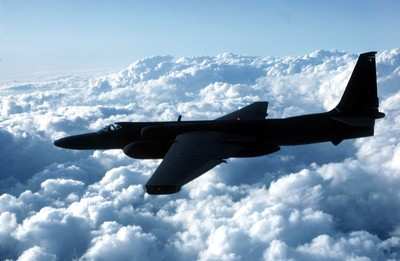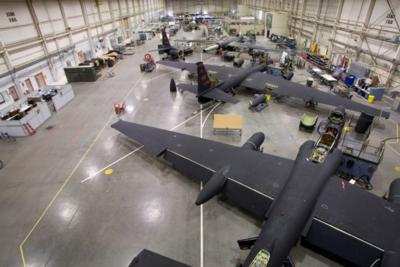With or Without You …
The U.S. Air Force, in accordance with ongoing efforts to reshape the manner in which the service surveils nations, organizations, and persons not supportive of U.S. policy, is proceeding with plans to retire its fleet of storied, high-flying U-2 Dragon Lady spy aircraft in fiscal 2026.

For nearly two decades, USAF brass has bandied about the notion of retiring the U-2—repeatedly prevailing upon Congress to ditch either the Cold War-era workhorse or the RQ-4 Global Hawk drones by which the Dragon Ladies were to be replaced.
Comes now 2023, and both platforms are on the chopping block.
Should Congress approve the divestments and permit the Air Force to sequentially retire its remaining U-2s and RQ-4s, the service stands to finish out the 2020s wanting for a dedicated reconnaissance aircraft.
During a 02 May 2023 Senate Armed Services Committee hearing on the Department of the Air Force’s fiscal 2024 budget request, Senator Ted Budd (Republican, North Carolina) noted the service’s plan to imminently retire the U-2. The aircraft’s pending retirement was briefly mentioned, also, in military budget documents released earlier this year.
The newest slate of USAF budget documents acknowledges the service’s plan to keep its U-2 fleet airworthy through the end of September 2025, thereafter shifting monies formerly earmarked for U-2 operations to higher priorities.
The Air Force set forth it expects Congress to remove legislative language that, in the past, has blocked the retirement of the iconic jets, thereby allowing the service to “move forward with U-2 divestment in FY 2026.”
Annual defense policy acts formerly approved by Congress have sought to ensure the Air Force is in possession of suitable Intelligence, Surveillance, Reconnaissance (ISR) assets prior to the shelving of the service’s U-2s and RQ-4s.
The USAF’s 2024 budget request indicates the Dragon Ladies and Global Hawks are to be replaced by orbital ISR systems.
The entirety of the Air Force’s 27 U-2s are housed at California’s Beale Air Force Base and rotate as needed through global U.S. military installations.
The U-2’s 105-foot wingspan—lauded and despised in equal-measures by generations of USAF Dragon Lady pilots—allows it to operate at the edge of space. Additional quirks necessitated by the U-2’s high-altitude mission take the forms of the machine’s bulbous nose radar and bizarre undercarriage, which comprises two main-gear assemblies arranged longitudinally—after the fashion of bicycle wheels. Landing U-2s require chase cars, which flank the aircraft as they slow, ensuring the tips of the aforementioned great, wide wings don’t scrape ground.

Famed for capturing the images by which the Kennedy administration, in 1962, proved to the world that the Soviet Union was building nuclear missile sites in Cuba, the U-2 recently gained 21st Century renown for tracking the Chinese surveillance balloon that overflew North America in February 2023.
In their twilight years, Dragon Ladies have served as high-altitude testbeds for numerous advanced reconnaissance and communication technologies. The aircraft have also helped vet artificial intelligence systems upon which advancements in DOD UAS platforms have been predicated.
What’s more, the U-2 is being used as a developmental platform in the Air Force’s Advanced Battle Management System initiative, which seeks to dramatically improve data-sharing capabilities among military assets.
How, exactly, the USAF will repurpose its cadre of U-2 pilots and maintainers remains unclear.
 Bolen Gives Congress a Rare Thumbs-Up
Bolen Gives Congress a Rare Thumbs-Up The SportPlane Resource Guide RETURNS!!!!
The SportPlane Resource Guide RETURNS!!!! Buying Sprees Continue: Textron eAviation Takes On Amazilia Aerospace
Buying Sprees Continue: Textron eAviation Takes On Amazilia Aerospace Hawker 4000 Bizjets Gain Nav System, Data Link STC
Hawker 4000 Bizjets Gain Nav System, Data Link STC Echodyne Gets BVLOS Waiver for AiRanger Aircraft
Echodyne Gets BVLOS Waiver for AiRanger Aircraft




